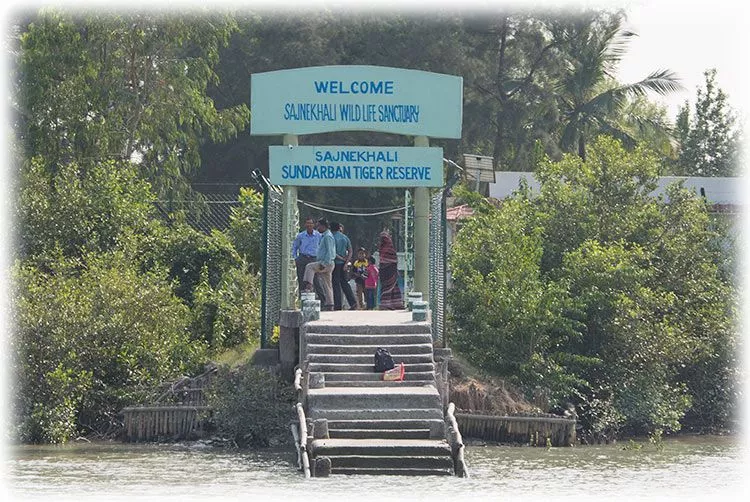SAJNEKHALI WATCHTOWER
Sajnekhali Watch Tower :-
This watch tower gives out a beautiful panoramic view of the Sundarbans. At the same time, you can also watch out for tigers, deer as well as other animals. It is a popular tourist destination and the forest office situated in there can issue permission so as to visit other places in the Sundarbans. There is also a hall that has the choicest display of various photographs of birds and animals alike shot by the forest officials.
Most of the tigers are sighted from this tower. Some other wildlife like axis deer, wild boars and crocodiles may also be seen from this watch tower.
This watch tower has a capacity to host 25 persons at a time. There is a sweet water pond where animals come to drink water. Behind the pond are stretches of land bereft of any vegetation where one can sight animals from a distance.
There is also a Mangrove Interpretation Centre, a Bono Bibi Temple as well as a Crocodile Park in the Sajnekhali watchtower complex. This watch tower provides one with the opportunity to view wildlife from close quarters. The most sought after sights by a bird watcher are seven colourful species of the Kingfisher, White Bellied Sea Eagle, Plovers, Lap-Wings, Curfews, Whimprel, Sandpipers and the occasional Pelican. The West Bengal Tourism Department Corporation’s Tourist lodge is also situated at Sajnekhali.
How to Reach: Caning is the gateway of Sajnekhali, where motorboats are available departing for the destination. Canning is well accessible by bus and train services from Kolkata. To reach Sajnekhali, hired boats from Basanti, Gosaba, Namkhana and Najatare are available which are well connected by roadway from Kolkata. By car driving straight to Sonakhali and a 3 hour ferry ride to Sajnekhali Tourist Lodge. Sonakhali is about 90 kms from Kolkata and takes 2.5 hrs by bus from Esplanade. The route is via EM Bypass - Bantala - Ghatak Pukur - Sarberia.Alternatively, can be reached Sajnekhali through Basanti (90 kms from Kolkata) to take an auto rickshaw to Gadkhali (another 11 kms away) to arrive at Gosaba. From Gosaba there is another ferry (about 20 mins) to reach Sajnekhali.
Nearby attractions of Sajnekhali: From Sajnekhali jetty, you can catch a ferry to Bhagabatpur Crocodile breeding farm, Halliday Island (famous for Barking Deer) and other parts of Sunderbans. You can also enjoy a ferry ride to the small village settlement of Gosaba, located in the Canning subdivision. You can also visit Netidhopani, which has the remnants of a mysterious 400-year-old temple. A trip to Kanak is also quite rewarding for travelers, which is the nesting ground of Olive Ridley Turtles.
Things to do in Sajnekhali: Apart from touring the sightseeing destinations at Sajnekhali, take out some time to visit the nearby villages. You can interact with the local people of the place and watch their life style to have an insight into their lives.
Related Search
- Sundarban Day Tour
- Sundarban 1 Night 2 Days Tour Package
- Sundarban 2 Night 3 Days Tour Package
- Sundarban 3 Nights 4 Days Tour Package
- Sundarban 4 Nights 5 Days Tour Package
- Sundarban wildlife photography Tour Package
- Sundarban Honeymoon Tour Package
- Sundarban Adventure Tour Package
- Sundarban Family Tour Package
- Sundarban Summer Tour Packages
- Sunderban Winter tour Package
- Sundarban Affordable Tour Package
- Sundarban Exotic Tour Package
- Sundarban Luxury Tour Package
- Sundarban Wildlife Tour Packages
